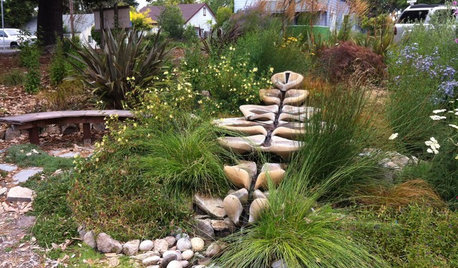Electrolysis Water Agriculture/Gardening
motanakajima
15 years ago
Related Stories

GARDENING GUIDES6 Plants for Colorful Fall Foliage in the Water-Wise Western Garden
Try these colorful, drought-tolerant additions to your garden for a fall season filled with color
Full Story
SAVING WATER11 Ways to Save Water at Home
Whether you live in a drought-stricken area or just want to help preserve a precious resource, here are things you can do to use less water
Full Story
LANDSCAPE DESIGNLearn Your Garden’s Microclimates for a Resilient Landscape
Reduce your water demand and learn the basis of planting the right plant in the right place
Full Story
GARDENING FOR BUTTERFLIES3 Ways Native Plants Make Gardening So Much Better
You probably know about the lower maintenance. But native plants' other benefits go far beyond a little less watering and weeding
Full Story
EARTH DAYGrow a Beautiful Garden With Ecofriendly Greywater
Reducing home water waste means lower bills and a healthier planet. Here's how to set up a greywater home irrigation system that can help
Full Story
LANDSCAPE DESIGNCalifornia Says Goodbye to the Sprawling Ornamental Lawn
New state rules will effectively limit turfgrass to 25 percent of the landscape in most new and renovated yards
Full Story
LANDSCAPE DESIGNNew Ways to Design With Water
Go beyond 3-tiered fountains and faux waterfalls to discover water's architectural possibilities
Full Story
GARDENING GUIDESGreat Design Plant: Ratibida Columnifera
A shortgrass prairie native wildflower fit for pollinators and dry trouble spots offers benefits all year long
Full Story
GARDENING GUIDESGreat Design Plant: Asclepias Incarnata for a Butterfly Garden
Beautiful swamp milkweed makes it easy to help monarchs and other pollinators in eastern U.S. gardens
Full Story
HOUZZ TVHouzz TV: How to Install a Rain Barrel
This DIY tutorial shows how easy it can be to capture rainwater from your roof to use in your garden later
Full StoryMore Discussions







lehua49
motanakajimaOriginal Author
Related Professionals
Benbrook Landscape Architects & Landscape Designers · Montgomeryville Landscape Architects & Landscape Designers · Saint Louis Park Landscape Architects & Landscape Designers · Peabody Landscape Contractors · Brookside Landscape Contractors · East Lake-Orient Park Landscape Contractors · Sugar Hill Landscape Contractors · Tewksbury Landscape Contractors · Thonotosassa Landscape Contractors · Woodbury Landscape Contractors · Carson Solar Energy Systems · Hawthorne Solar Energy Systems · Imperial Beach Solar Energy Systems · New Canaan Solar Energy Systems · Norton Solar Energy Systemsgringojay
motanakajimaOriginal Author
gringojay
ronalawn82
lehua49
motanakajimaOriginal Author
motanakajimaOriginal Author
motanakajimaOriginal Author
motanakajimaOriginal Author
lehua49
motanakajimaOriginal Author
gringojay
motanakajimaOriginal Author
gringojay
motanakajimaOriginal Author
gringojay
motanakajimaOriginal Author
gringojay
motanakajimaOriginal Author
gringojay
motanakajimaOriginal Author
gringojay
motanakajimaOriginal Author
gringojay
motanakajimaOriginal Author
motanakajimaOriginal Author
gringojay
motanakajimaOriginal Author
gringojay
motanakajimaOriginal Author
gringojay